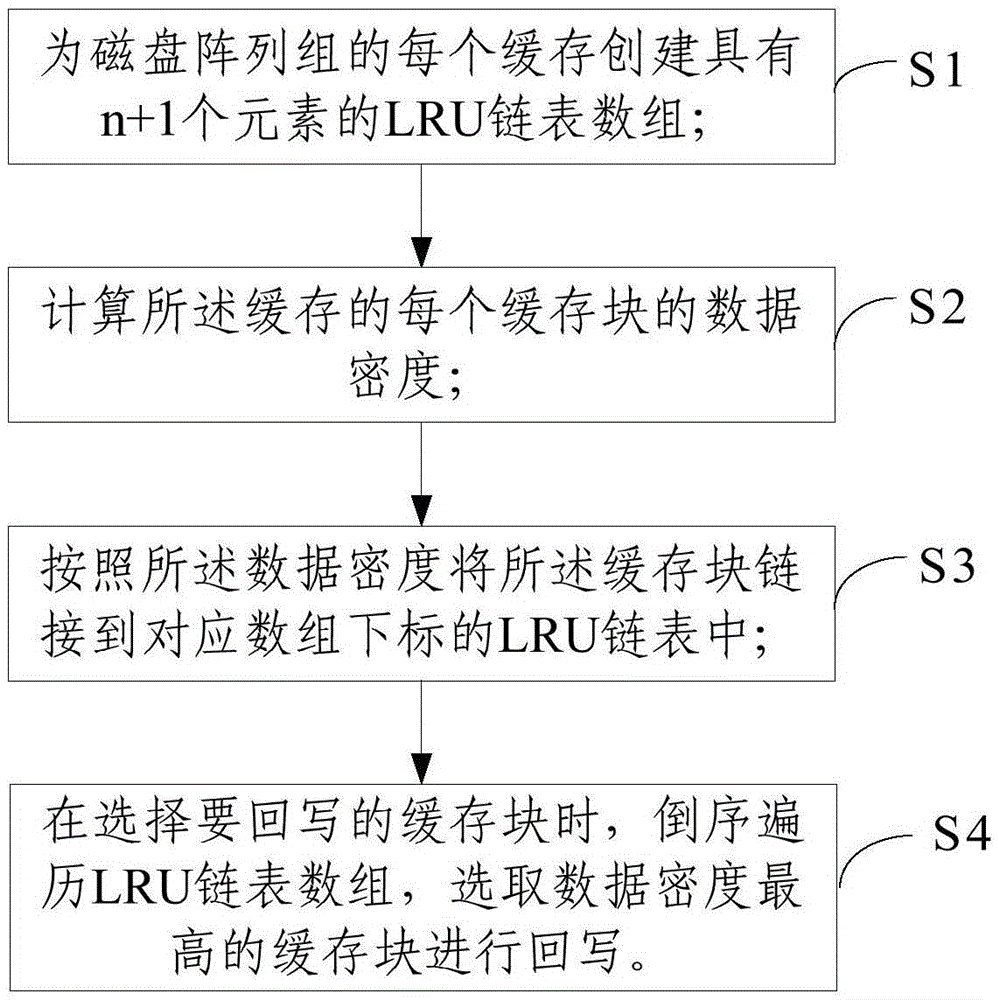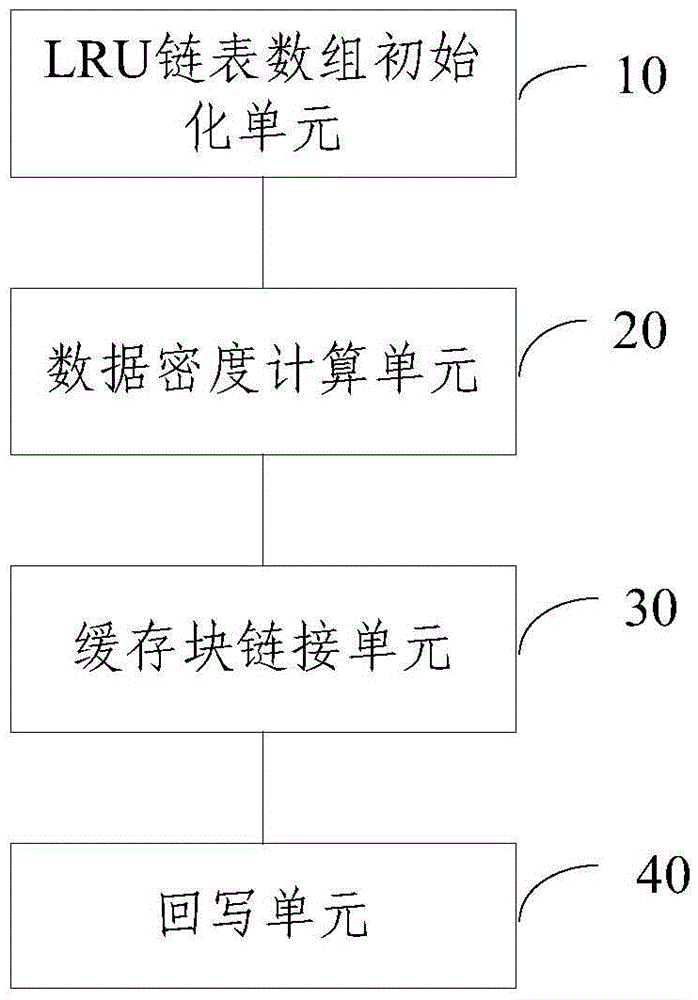Data hotness and data density based cache back-writing method and system
A technology of data density and caching, applied in the direction of input/output to record carrier, etc., can solve the problems of low average data heat and no guarantee of data density, and achieve the effect of improving cache write-back efficiency
- Summary
- Abstract
- Description
- Claims
- Application Information
AI Technical Summary
Problems solved by technology
Method used
Image
Examples
Embodiment Construction
[0025] Embodiments of the present invention will be described in detail below with reference to the accompanying drawings.
[0026] figure 1 A flow chart of a cache write-back method based on data heat and data density is shown in the present invention.
[0027] The present invention provides a cache write-back algorithm based on data heat and data density, the method comprising:
[0028] S1. Create an LRU linked list array with n+1 elements for each cache of the disk array group;
[0029] S2. Calculate the data density of each cache block in the cache;
[0030] The calculation formula of data density is as follows:
[0031] Data density = effective data volume of the cache block * n / maximum data volume of the cache block,
[0032] Wherein, the value range of the data density is [0-n].
[0033] S3. Link the cache block to the LRU linked list corresponding to the array subscript according to the data density; for example, link the mth buffer block arranged in order of da...
PUM
 Login to View More
Login to View More Abstract
Description
Claims
Application Information
 Login to View More
Login to View More - R&D
- Intellectual Property
- Life Sciences
- Materials
- Tech Scout
- Unparalleled Data Quality
- Higher Quality Content
- 60% Fewer Hallucinations
Browse by: Latest US Patents, China's latest patents, Technical Efficacy Thesaurus, Application Domain, Technology Topic, Popular Technical Reports.
© 2025 PatSnap. All rights reserved.Legal|Privacy policy|Modern Slavery Act Transparency Statement|Sitemap|About US| Contact US: help@patsnap.com


